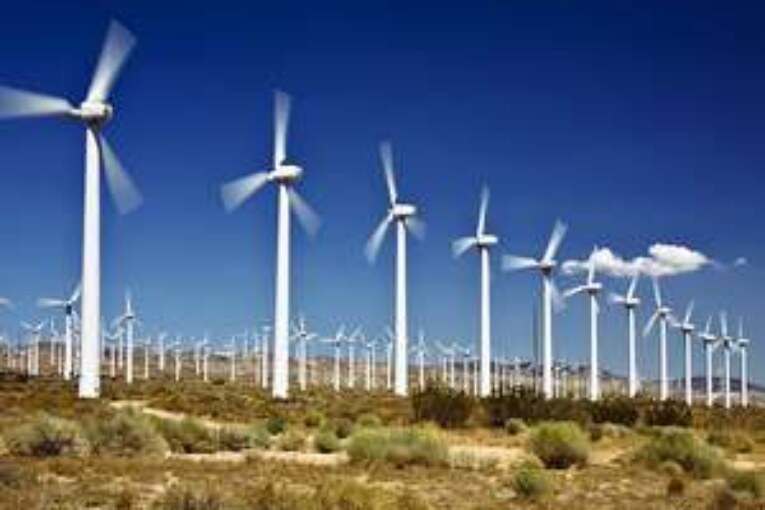
What is Turbine??
- The device in which the kinetic, potential or intermolecular energy held by the fluid is converted in the form of mechanical energy of a rotating member is known as a turbine.
- Also, defined as all machines in which hydraulic energy is transferred into mechanical energy, or in some other moving parts are known as ‘turbines’ or hydraulically motors.
- A turbine is a rotary mechanical device that extracts energy from a fast moving flow of water, steam, gas, air, or other fluid and converts it into useful work.
- A turbine is a turbo-machine with at least one mobbing part called a rotor assembly, which is a shaft or drum with blades attached.
- Moving fluid acts on the blades so that they move and impart rotational energy to the rotor.
Working Principle
- When the turbine shaft is directly coupled to an electric generator mechanical energy is converted into electrical energy.
- When the fluid strikes the blades of the turbine, the blades are displaced which produces rotational energy.
- This electrical power is known as hydroelectric power.
Types of Turbine
- Water Turbine
- Steam Turbine
- Gas Turbine
- Wind Turbine
Water Turbine
- Impulse Turbine
- Reaction Turbine
- Impulse Turbine
- In an Impulse turbine, fast moving fluid is fired through a narrow nozzle at the turbine blades to make them spin around.
- In an impulse turbine, the fluid is forced to hit the turbine at high speed.
- Impulse Turbine are two types:
- Pelton Turbine
- Cross-Flow Turbine
Pelton Wheel
- These are usually used for high head, low flow power plants.
- It was invented by lester Ella Pelton in the 1870s.
Application of Pelton Wheel
- Pelton wheels are the preferred when the available water source has relatively high hydraulic head at low flow rates.
- Mostly used Pico Hydro Electric Power generation unit.
- Pelton wheels are made in all sizes.
Cross-flow Turbine
- It is developed by Anthony Michel, in 1903 and is used for low heads.
- As with a water wheel, the water is admitted at the turbine’s edge. After passing the runner, it leaves on the opposite side.
- The cross-flow turbine is a low-speed machine that is well suited for locations with a low head but high flow.
Applications of Cross-flow Turbine
- The peak efficiency of a cross-flow turbine is somewhat less than a kaplon, francis or pelton turbine.
- It has a low price, and good regulation.
- As water going through the runner twice, provides additional efficiency.
- Cross-flow turbines are mostly used in mini and micro hydropower units.
2. Reaction Turbine
- In reaction turbines torque developed by reacting to the fluid’s pressure.
- The pressure of the fluid changes as it passes through the turbine rotor blades.
- The turbine must be fully immersed in the flowing fluid and the pressure casement is also provided for a working fluid.
- Reaction Turbine are three types:
- Kaplan Turbine
- Francis Turbine
- Kinetic Turbine
Kaplan Turbine
- The Kaplan turbine is a water turbine which has adjustable blades and is used for low heads and high discharge.
- It was developed in 1913 by the Austrian professor Viktor Kaplan.
- The Kaplan turbine is an inward flow reaction turbine, which means that the working fluid changes pressure as it moves through the turbine and gives to its energy.
Applications of Kaplan Turbine
- Kaplan turbines are widely used throughout the world for electrical power production. They cover the lowest head hydro sites and are especially suited for high flow conditions.
- Inexpensive micro turbines on the Kaplan turbine model are manufactured for individual power production with as little head.
Francis Turbine
- The Francis turbine is a type of water turbine that was developed by James B.Franceis and are used for medium head and medium discharge.
- The turbine’s exit tube is shaped to help decelerate the water flow and recover the pressure.
- Water flow is radial from exterior to interior.
Applications of Francis Turbine
- Francis type units cover a head range from 40 to 600m.
- Its efficiency decreases as flow decreases.
- They may also be used for pumped storage, where a reservoir is filled by the turbine driven by the generator acting as a large electrical motor during periods of low power demand.
Kinetic Turbines
- Kinetic energy turbines, also called free flow turbines, generate electricity from the kinetic energy present in flowing water.
- Kinetic systems utilize the water stream’s natural pathway.
- They do not require the diversion of water through manmade channels, riverbeds, or pipes.
- They might have applications in such conduits.
Advantages of Turbines
- Large power achieved by relatively small size.
- High efficiency
- Simple design
- High revolution


